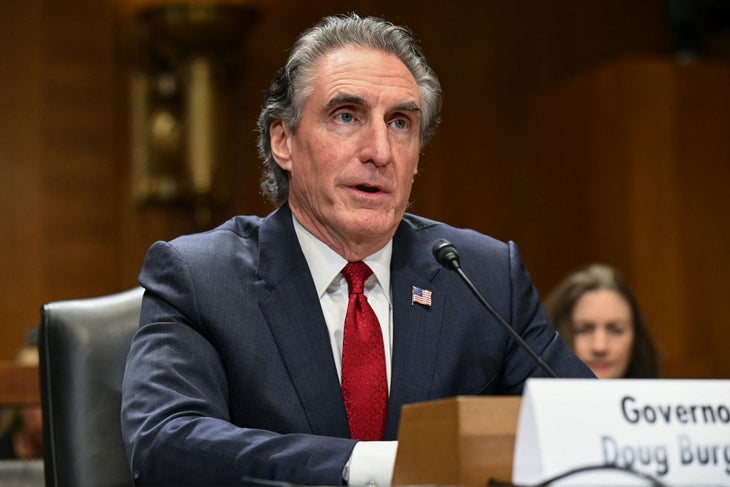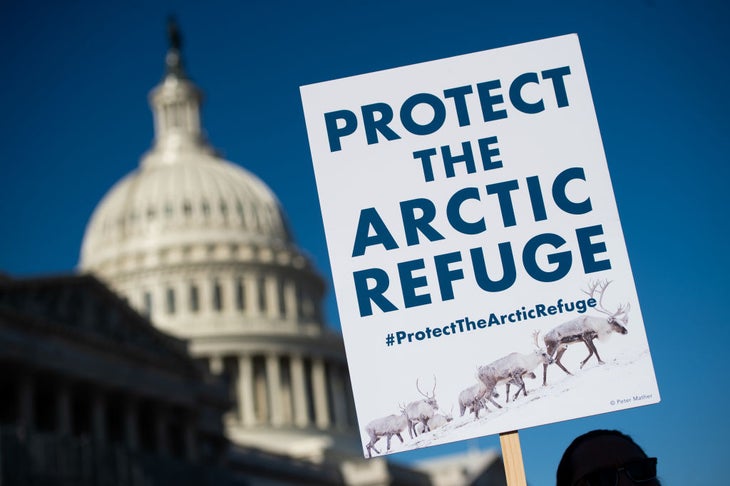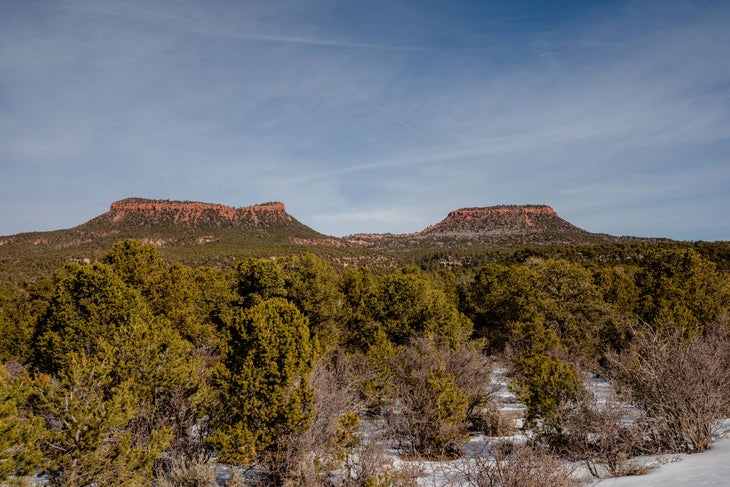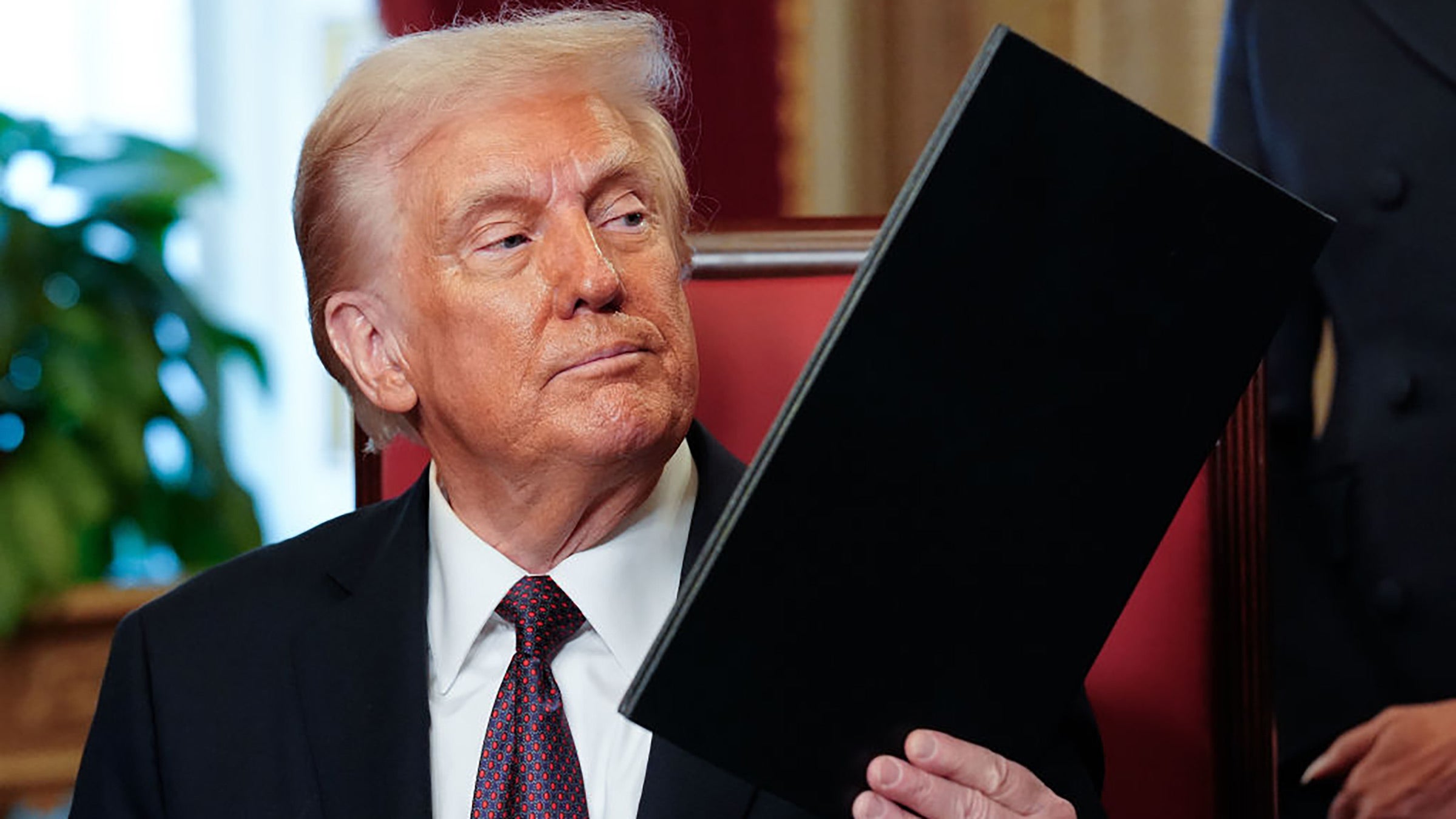Barely two weeks into his second presidential term, Donald Trump has already dramatically changed the policies governing public lands, outdoor recreation, and the environment.
On Monday, January 20, Trump renamed the country’s highest peak, 20,310-foot Denali, to Mount McKinley, replacing the indigenous title with that of the 25th president of the United States. The same day, Trump the U.S. from the Paris Agreement, the 2016 international treaty to battle climate change. He on oil and gas leasing within the state’s Arctic National Wildlife Refuge. He requiring the National Marine Fisheries, Bureau of Reclamation, and U.S. Fish and Wildlife Service to begin pumping water from California’s San Joaquin Delta across the state—a move that could jeopardize endangered fish. And Trump announced a , which has a within the National Park Service.
These moves echo ones that Trump made during his first presidential term: like the controversial downsizing of Utah’s Bear’s Ears and Grand Staircase-Escalante national monuments by almost a million acres apiece and the different climate, water, and wildlife protections.
But critics may forget that, during his first term, Trump also signed into law a pair of very significant conservation bills. In 2019, the John D. Dingell, Jr. Conservation, Management, and Recreation Act created 1.3 million acres of Wilderness and ten new Wild and Scenic River segments. It also increased the size of three national parks. Then in 2020, Trump encouraged the passage of the , which funneled $9.5 billion towards the infamous National Park Service (NPS) maintenance backlog. It permanently allocated $900 million annually to the Land and Water Conservation Fund, the nation’s single largest source of outdoor recreation infrastructure funding.
What will the second Trump administration mean for public lands, the environment, and outdoor recreation? Nobody knows for sure. But we’ve taken a look at the decisions Trump has already made, what he’s said he’ll do, and a wish-list created by personnel from the previous administration, to make an educated analysis.
Hiring Personnel Who Appreciate Outdoor Rec and Industry
One of the former president’s first personnel nominees for his upcoming administration was North Dakota governor Doug Burgum to lead the Department of the Interior. The agency controls some 500 million acres of public land and oversees the National Park Service, the Bureau of Land Management (BLM), and the Fish and Wildlife Service.
Critics have labeled Burgum a champion of the oil and gas industry, having led the state with the third-largest oil production and publicly criticized the Biden administration’s efforts to . At the same time, Burgum is himself an avid horseman, hunter, skier, and hiker and has been a booster of outdoor recreation in North Dakota, creating the state’s Office of Outdoor Recreation and allocating $1.2 million in grants for trail building.

Trump is also expected to name Burgum the administration’s energy czar, following through on his campaign promises to increase oil and gas production as a way to curb energy costs. Burgum’s nomination drew praise from the energy and mining sector. “He recognizes that affordable and reliable energy along with American mineral production are critical to growing our nation’s economy,” Rich Nolan, president and CEO of the National Mining Association told .
Conservatives argue that increased mining and domestic fossil fuel production could spur economic activity, but conservationists are bracing for the environmental blow. “Public lands are beloved and vitally important to people in this country. The first Trump administration treated these places like they’re meant to be dug up, drilled, or sold off for profit,” David Seabrook, interim president of the Wilderness Society, said in a press release.
Despite Burgum’s alignment with the oil and gas industry, other sources within the outdoor recreation community told ���ϳԹ��� that the North Dakota governor represents a best-case-scenario nominee from the Republican administration. “Governor Burgum has shown a commitment to supporting outdoor recreation as an economic driver and a meaningful way to connect communities,” said Jessica Turner, president of outdoor recreation trade association Outdoor Recreation Roundtable, in a press release. “As an avid outdoorsman, we are hopeful that the governor’s long-time admiration of Teddy Roosevelt and deep understanding of business will help support and grow the recreation economy.”
According to Cody Schulz, director of North Dakota Parks and Recreation, which oversees the state’s new office of outdoor recreation, Governor Burgum is “an incredibly curious and collaborative leader who encourages his personnel to make decisions based on data.”
Schulz says that Burgum’s efforts to improve outdoor recreation in North Dakota stem from his own passion for the outdoors, and from an understanding that the industry can be an important economic driver. “Conservation and outdoor recreation infrastructure draws both visitors and new residents to North Dakota,” he says.
Burgum’s data-driven approach offers a ray of hope for fans of the Bureau of Land Management’s new Public Lands Rule, which considers recreation on equal footing with extractive industries like grazing and oil and gas when making land use decisions.
Moving the BLM Back to Colorado
In 2019, the Trump administration relocated the agency’s headquarters from Washington, D.C. to Grand Junction, Colorado. The relocation was touted as a practical move to get managers closer to the lands they managed and seen as a way to attract workers who may not have been able to afford D.C. ‘s notoriously expensive cost of living.
Eventually, the BLM’s headquarters was returned to D.C. by Interior Secretary Deb Haaland in 2021. According to a 2021 Government Accountability Office report, collapsing the D.C. office drove out the agency’s most experienced employees and the number of vacancies. Out of 176 staff told to relocate, only 41 accepted their reassignments and the rest left their positions.
Tracy Stone-Manning, who was appointed by Biden in 2021 to lead the BLM, called the move “wildly disruptive,” in a . “It’s years of opportunity cost when we could and should be focused on the work of the bureau, for public lands and the American people, and we had to instead focus on rebuilding the bureau,” Stone-Manning said.
Lawmakers in Colorado, , have said that they support moving the BLM headquarters back to Grand Junction.
Taking Aim at Environmental Policy
The downsizing of Bear’s Ears and Grand Staircase-Escalante National Monuments was one of the former president’s most high-profile decisions on public land. While the cuts were reversed by the Biden administration, it’s possible that Trump will again shrink the monuments. Utah Republican Representative John Curtis told The Salt Lake Tribune he .

The first Trump administration championed mineral extraction and land development as a way to pump revenue into local economies and return power over protected lands to states. The administration also weakened several bedrock environmental laws. Probably most significant were alterations to protections afforded by the Clean Water Act, the Endangered Species Act, and the National Environmental Protection Act (NEPA).
In 2017, Trump’s EPA , which afforded protections to seasonal wetlands and streams, particularly prevalent in the arid, but recreation-rich western United States. Then in 2019, the administration changed the Endangered Species Act, removing protections for threatened species and making it more difficult to add additional species to the list. Agencies would also be allowed to conduct economic assessments when deciding whether a species warrants protection.
More subtle, but arguably more problematic, was the weakening of the National Environmental Protection Act (NEPA), the law that requires an environmental review and public comment period for every major project. It’s used on everything from major timber sales to ski resort development.
Jon Jarvis, director of the Park Service under President Barack Obama, said NEPA helped guide multiple policies during his time with the NPS, from the relocation of wolves to Yellowstone, to the altering traffic flow in Yosemite. “Sunlight is a great disinfectant, and many of these agency plans would now be done in the dark,” Jarvis told ���ϳԹ���.
Trump’s Interior Department made several other controversial moves during his first administration that directly impacted outdoor recreation. In 2017, the department made a unilateral decision to increase admission prices during peak seasons at the nation’s most popular national parks from $30 to $70. There was so much furor about the decision that the administration canceled those plans five months later.
Then in 2020, the department issued an order that allowed for e-bike use on any federal trail where regular bikes were allowed. Cycling advocates and at least one advocacy group applauded the decision that would allow better access for cyclists who rely on e-bikes. “The Secretarial Order will help get public lands visitors out of their cars and beyond congested visitor centers and parking lots,” wrote the cycling advocacy group People For Bikes at the time. More than 50 other recreation groups, however, formally objected to the policy, saying that the decision had been made without any study on its impact on wildlife and visitor safety.
This year, the Park Service ruled that it would make decisions on up to individual park units on a “case-by-case basis.”
Creating Fewer National Monuments
Some Western conservatives would like to see the administration spearhead an effort to repeal or weaken the 1906 Antiquities Act, which allows a president to create new national monuments. The law has been used in some 300 instances by presidents from Teddy Roosevelt to George W. Bush to protect millions of acres of federal land. Some of the nation’s most popular national parks began as monuments, including the Grand Canyon, Joshua Tree, and Grand Teton.
Only Congress can repeal a law in the United States, so abolishing the Antiquities Act would require a majority of both houses to want it gone. Given pro-monument public sentiment, that seems like a long shot.

More likely is a severe weakening of the law through the Supreme Court. Published in April 2022 by the conservative think tank The Heritage Project, the 2025 Presidential Transition Project, known colloquially as “Project 2025,” outlines the steps such an effort might take. The document calls for a “downward adjustment” of the nation’s national monuments, and then directs the republican President to “vigorously defend the downward adjustments it makes to permit a ruling on a President’s authority to reduce the size of national monuments by the U.S. Supreme Court.”
Throughout his campaign, Trump repeatedly distanced himself from the document. But authors of Project 2025 have noted that other prominent conservatives support weakening the Antiquities Act. In 2021 Chief Justice Roberts signaled that he is looking for a case whose verdict could be used to curtail the ability of presidents to create large monuments.
It may also mean the loss of a Biden-era protections like a 10-mile oil exploration moratorium placed around New Mexico’s Chaco Canyon National Historical Park to help protect Native American antiquities, and one on 221,898 acres of Forest Service and BLM land on Colorado’s Thompson Divide, just northwest of Crested Butte. The latter was the result of years of work by an unlikely coalition of ranchers, hunters, anglers, mountain bikers, off-road vehicle users, and environmentalists to protect the habitat of elk, bear, deer, moose, mountain lion, and a pair of endangered species: Colorado River cutthroat trout and Canadian lynx. The Project 2025 document specifically targets both protections.
Also on the chopping block may be Biden’s public land order to Minnesota’s Boundary Waters Canoe Area for 20 years. The decades-long fight over proposed copper and nickel mines adjacent to the wilderness area was seemingly settled in 2023 with the order. At issue were concerns that mine waste would flow directly down the Kawishiwi River into the waterways of the nation’s most-visited Wilderness Area (some 165,000 visitors annually.) Project 2025 calls for that order to be reversed despite recent polling that shows 69 percent of Minnesota for the Boundary Waters.
All of these potential rollbacks fly in the face of what many Americans want, says Jenny Rowland-Shea, director of public lands for The Center for American Progress, a progressive research and advocacy group. She cites a , which found that 78 percent of Western voters want more emphasis on conserving wildlife migration routes, providing highway crossings, and limiting more development to protect wildlife habitats. According to the study, just 20 percent of voters want more emphasis on economically productive uses of land such as new development, roads, ranching, or oil and gas production.
“The United States is actually producing record amounts of oil right now,” she says.


